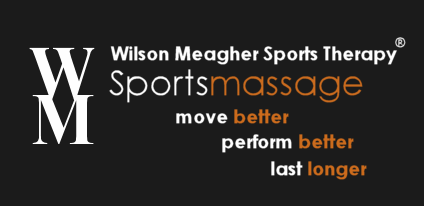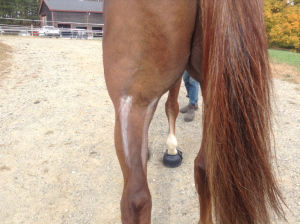|
Simple muscle tightness in this small muscle can lead to a problem: especially in performance and hock flexions Letís take a look at simple muscle tightness in the Gastrocnemius. Very big name for a small muscle. Yet, this small muscle is powerful in its job and critically important for the ease of motion and performance. The gastrocnemius is the muscle that extends the hock and flexes the stifle. It is located on the back of the lower hind leg and attaches to the hock joint. All muscles pull. They contract and release. When a muscle is tight, the muscle has a difficult time releasing. Therefore it is the release process of the muscle that is effected by simple muscle tightness. For example, if the hock muscle extends the hock, by drawing the hind leg back and behind the body, then if the muscle is tight, it will have difficulty releasing to flex the hock, thus bringing the hind leg forward and bending under the body.
Now comes the problem. If a horse has been using their hocks consistently in such movements listed above, and the gastrocnemius, or hock extensors are tight, then resistance to flexion of the hock may occur. When a veterinarian flexes the hock joint for an assessment and the horse jogs off short behind, or limited in the flexion, some horses may respond this way due to muscle tightness and not due to inefficient joint mobility. Therefore it is critically important to assess if the hock muscle extensor (gastrocnemius) is tight due to exercise or because of a compromised joint. If the hock muscles are tight due to the strain and exertion of exercise, then it is important to have a professional human massage therapist or physical therapist work the tightness out before assessing the joint through flexions. If the hock muscles remain tight and the hock joint is flexed, the hock will look stiff, labored and limited in flexion.
|
 |


 Movements such as the canter, passage, piaffe,
canter pirouette, sliding stops in reining, jumping, all require the
hock and hind leg to come under the body by flexing or bending the
hock. When this muscle is used consistently, it can tighten in
response to the exertion of exercise.
Movements such as the canter, passage, piaffe,
canter pirouette, sliding stops in reining, jumping, all require the
hock and hind leg to come under the body by flexing or bending the
hock. When this muscle is used consistently, it can tighten in
response to the exertion of exercise.